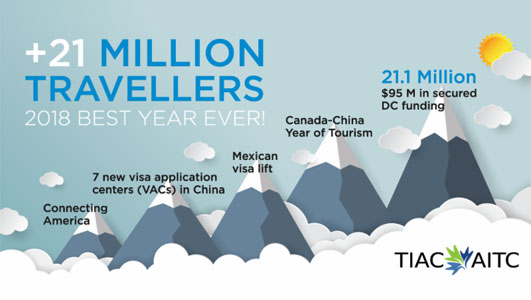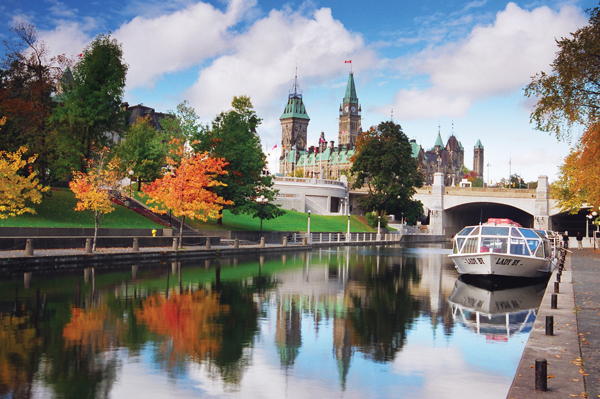Another Record Year for Canada
The tourism sector in Canada has reached another milestone, beating the 2017 record for arrivals by more than 250,000 travellers.
Continued growth, say Tourism Industry Association of Canada (TIAC) officials, is a testament to tourism’s place as an essential contributor to the Canadian economy, and growing export industry. Since international travellers typically spend more and stay longer than domestic travellers, continued growth from global markets means tourism businesses coast to coast continue to thrive.
In 2018, visitors from the United States made up 68% of international arrivals, while overseas visitors made up a record 32% of visits to Canada. Of the international markets, Brazil (up 31%) and India (up 14.9%) had the highest growth, but China (up 7%) wasn’t too far behind. The top three markets overall remain the United States, the United Kingdom and China.
The positive growth is being attributed to Destination Canada’s increased marketing efforts in international markets, industry participation in China readiness campaigns, continued work on the increasing labour market, growth in meetings and conventions, more international air routes and TIAC’s ongoing advocacy efforts.
Other industry “wins” that contribute to record-breaking numbers include the movement of Mexican visitors to the eTA, which has grown the Mexican market significantly since 2016. TIAC’s success in securing Destination Canada base funding at $95 million per year and the continuation of the Connecting America program has also increased Canada’s presence and ability to attract more international travellers.
According to TIAC officials, the organization will continue to share these successes with the federal government to maintain the sector’s international growth. TIAC’s pre-budget submission outlined vital areas that will enhance the industry’s achievements, including a significant investment in skills and capacity building for tourism sector jobs, increasing Destination Canada’s marketing funding permanently to $135 million a year to be internationally competitive, and a stronger focus on measures to entice international business travel such as the reintroduction of rebates or tax incentives for those travellers.




